Abstract
A second order rotatable design was used to obtain polynomial equations describing the effects of combinations of sulfur dioxide (SO2) and ozone (O3) on foliar injury and plant growth. The response surfaces derived from these equations were displayed as contour or isometric (3-dimensional) plots. The contour plots aided in the interpretation of the pollutant interactions and were judged easier to use than the isometric plots. Plants of `Grand Rapids' lettuce (Lactuca sativa L.), `Cherry Belle' radish (Raphanus sativus L.), and `Alsweet' pea (Pisum sativum L.) were grown in a controlled environment chamber and exposed to seven combinations of SO2 and O3. Injury was evaluated based on visible chlorosis and necrosis and growth was evaluated as leaf area and dry weight. Covariate measurements were used to increase precision. Radish and pea had greater injury, in general, that did lettuce; all three species were sensitive to O3, and pea was most sensitive and radish least sensitive to SO2. Leaf injury responses were relatively more affected by the pollutants than were plant growth responses in radish and pea but not in lettuce. In radish, hypocotyl growth was more sensitive to the pollutants than was leaf growth.
Full text
PDF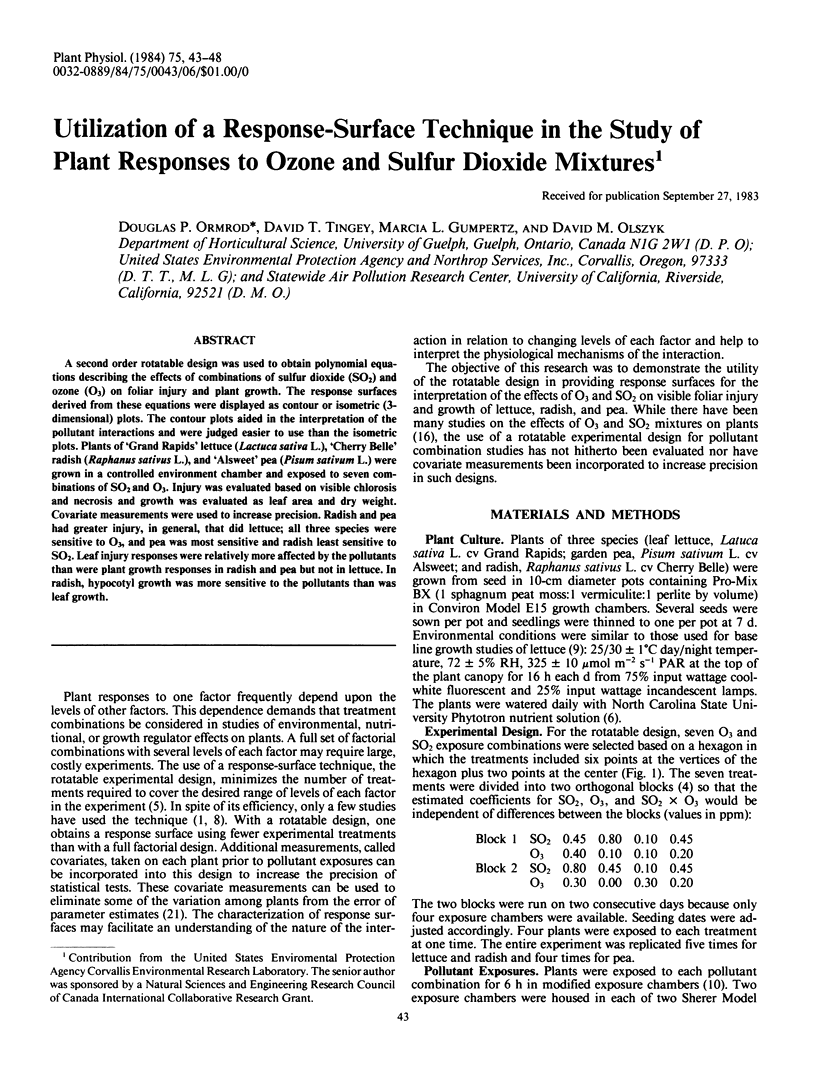
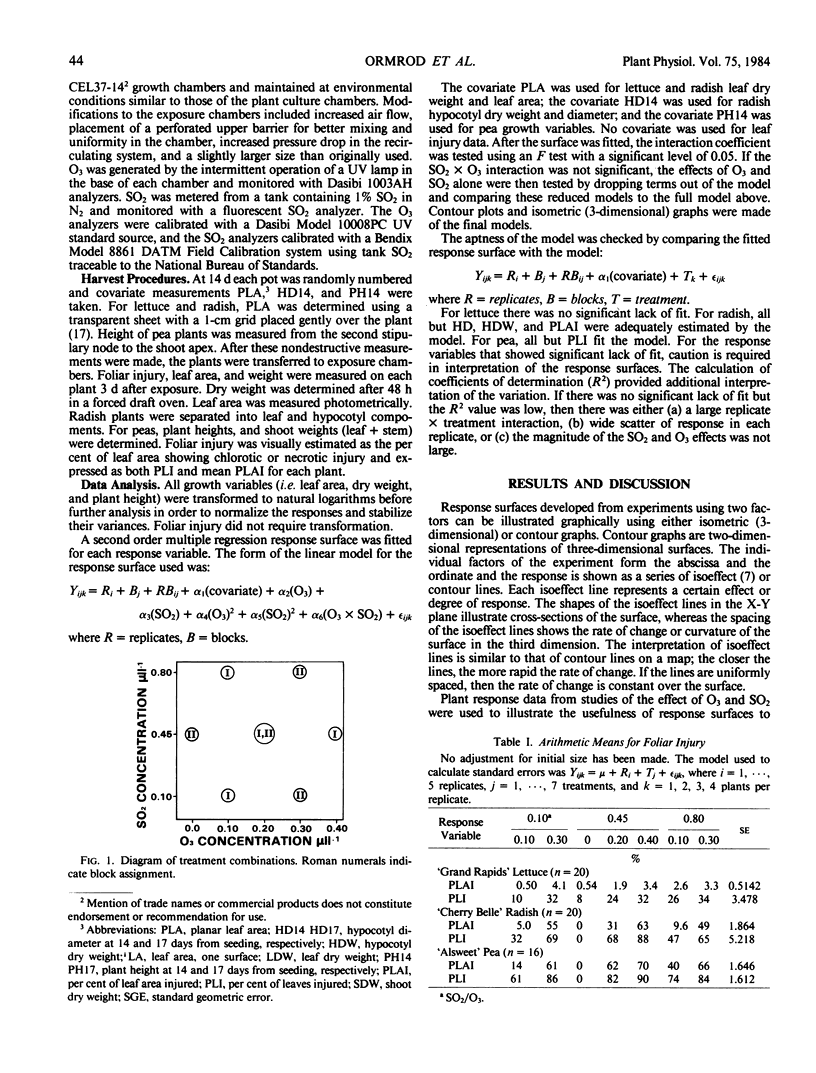
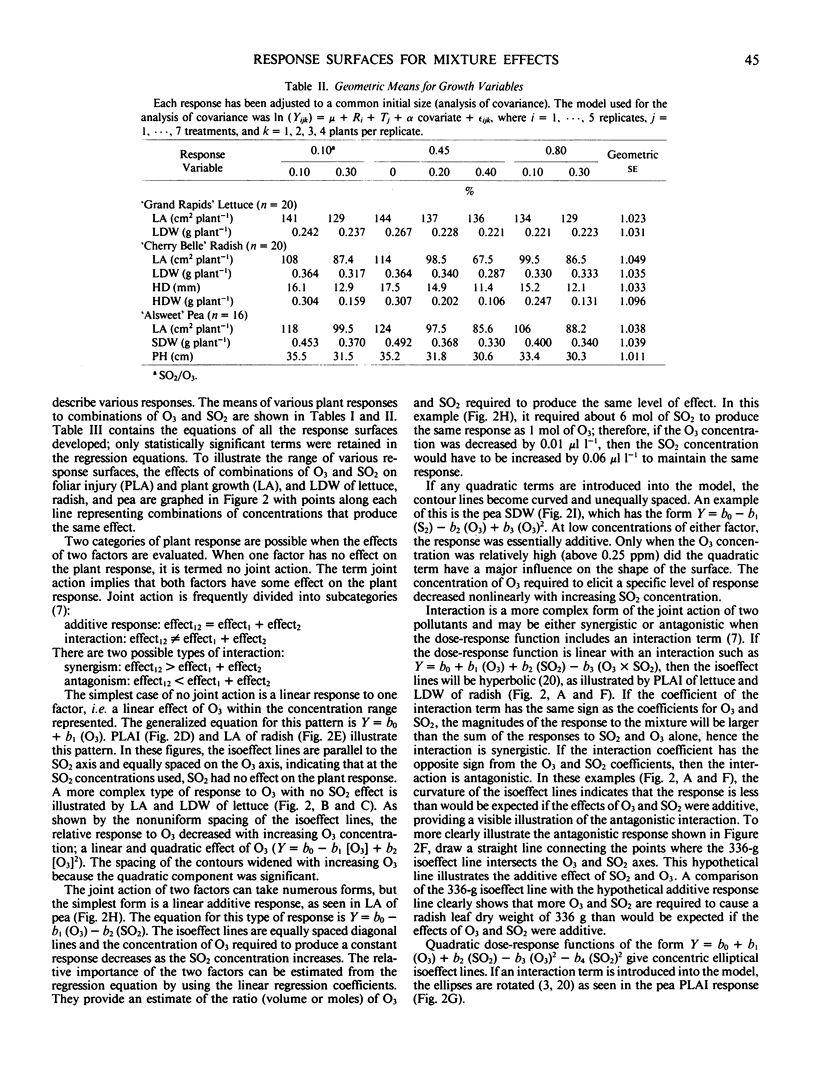
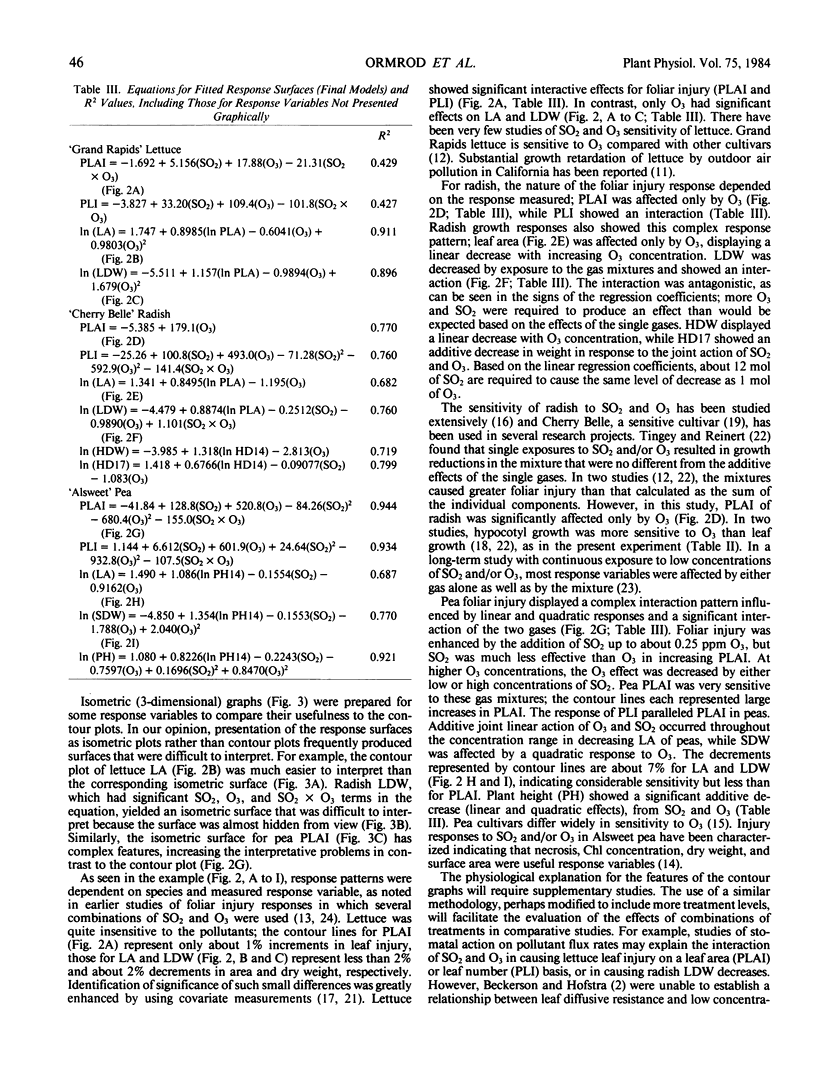
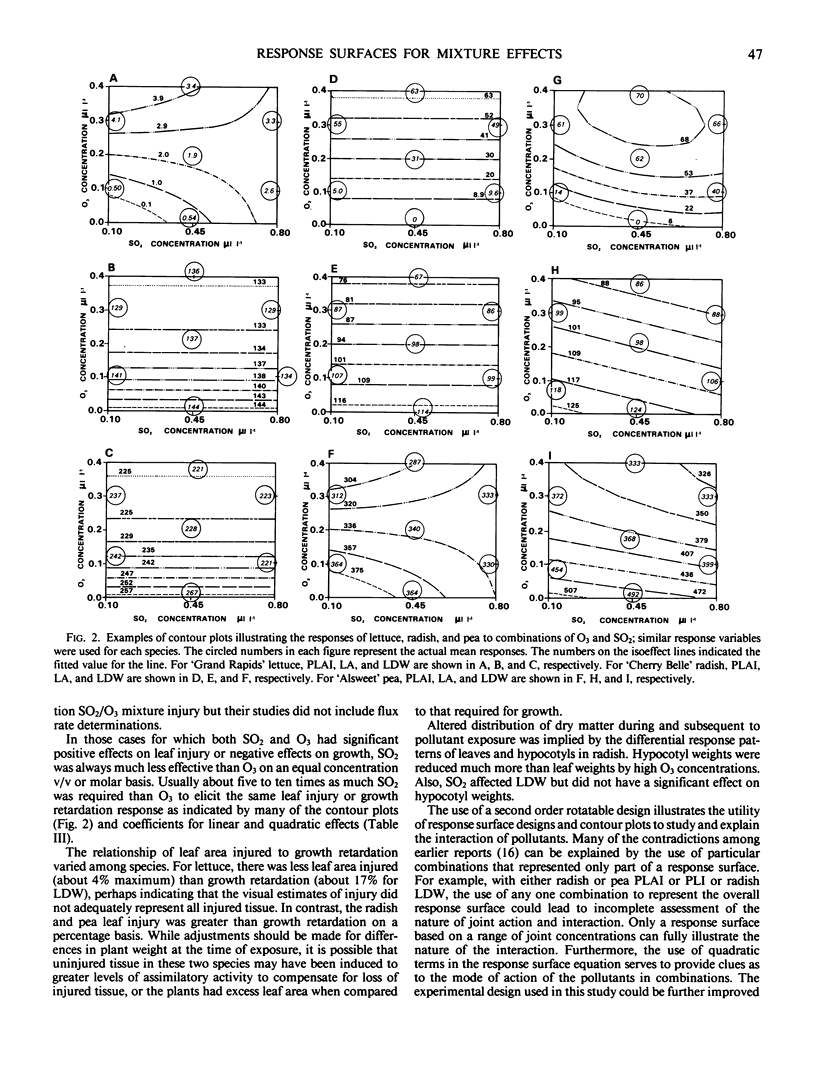
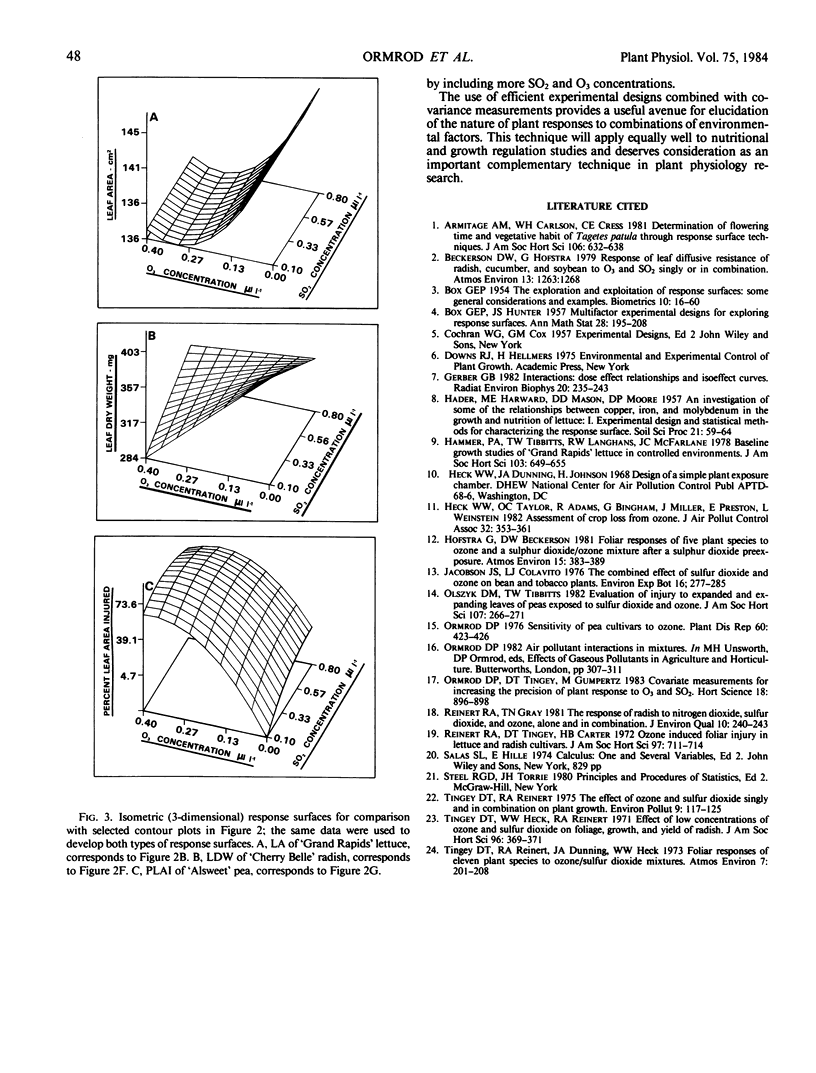
Selected References
These references are in PubMed. This may not be the complete list of references from this article.
- Gerber G. B. Interactions: dose effect relationships and isoeffect curves. Radiat Environ Biophys. 1982;20(4):235–243. doi: 10.1007/BF01323749. [DOI] [PubMed] [Google Scholar]
- NUNN J. F., HILL D. W. Respiratory dead space and arterial to end-tidal carbon dioxide tension difference in anesthetized man. J Appl Physiol. 1960 May;15:383–389. doi: 10.1152/jappl.1960.15.3.383. [DOI] [PubMed] [Google Scholar]


